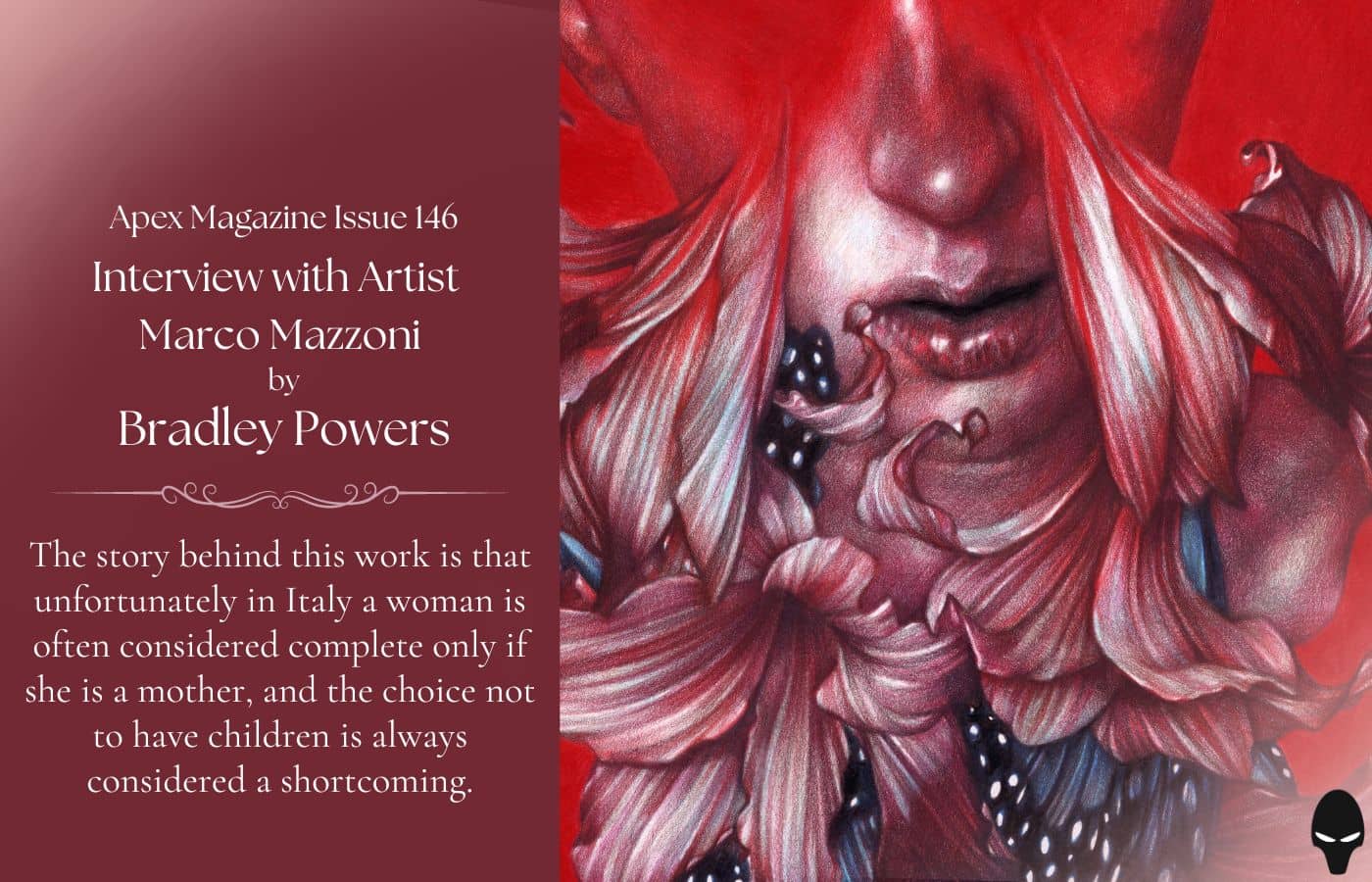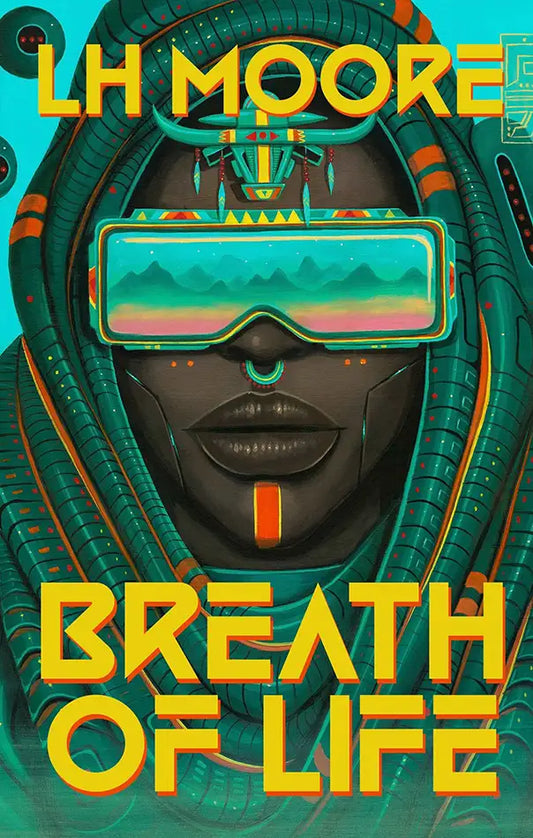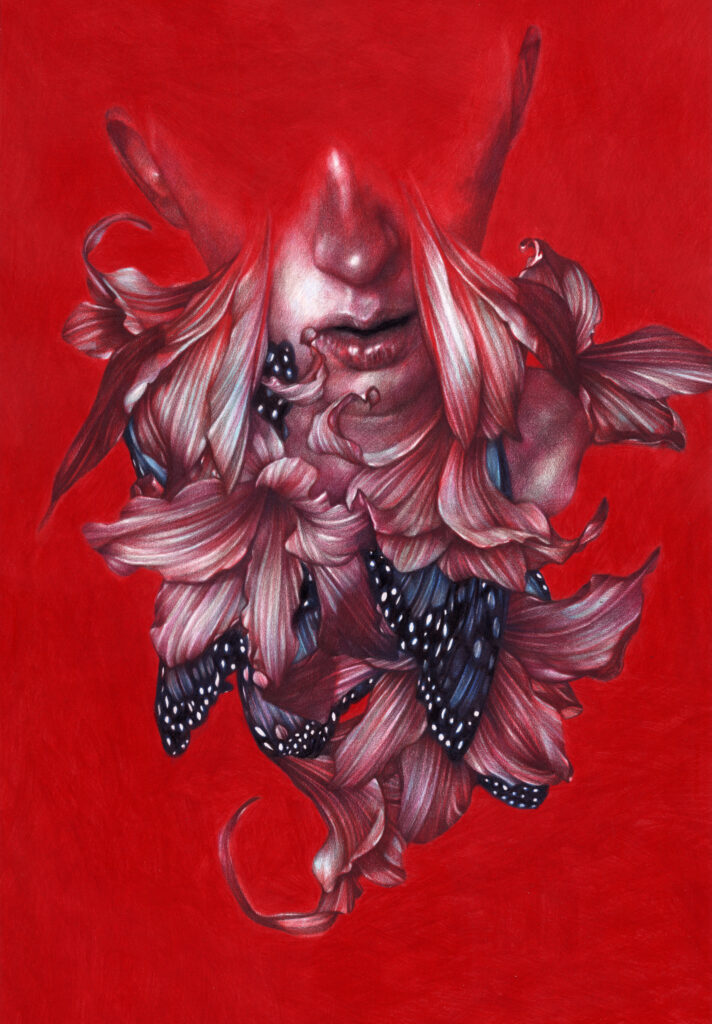
Welcome to Apex Magazine, Marco Mazzoni! Mazzoni is a colored pencil artist who comes from a unique background, which infuses his works with a sense that within them there is a story to unfold. We are enraptured with the opportunity to explore what lies beneath the surface of these nature laden portraiture works.
BRADLEY POWERS: Sardinian folklore, and the women who were highly respected as herbal healers, are the main inspiration for a lot of your work. Can you explain the story behind the piece on this month’s cover?
MARCO MAZZONI: All my work is based on the moment of encounter between nature and a human being, and the type of ecstasy created when there is a perfectly balanced fusion of them. Plants have been a very powerful medicinal tool in Italian culture for centuries, as well as a representation of states of mind. The story behind this work is that unfortunately in Italy a woman is often considered complete only if she is a mother, and the choice not to have children is always considered a shortcoming. The lily is the symbol of fertility—in Renaissance works the archangel Gabriel holds it in his hand when he warns Saint Mary that she has become pregnant. I think that freedom of choice is the greatest fortune we have, and in this piece I’m trying to represent that exact moment when women in my nation needs to fight for basic rights.
BP: How did growing up with awareness of the matriarchal past of Sardinia form your worldview and how does that affect your artwork today?
MM: It made me a non-patriarchal person. From what I can see in Italy, in some families the idea of male superiority in the family remains, which is then perpetuated on the male children. The high rate of murders by men who do not accept that their partners leave them is a clear problem and is the result of this patriarchal culture. To some, the woman is still considered an object because the male has the economic power or simply the physical strength. I was lucky enough to grow up in a different nucleus, which saved me from this mentality, but if I think about it carefully, this happened purely by chance. I will never know if my consciousness would be the same with another kind of education because here, for example, school doesn't help us to destroy the patriarchy system: school prepares us for the world of work, and the world of work severely limits the hiring of women (because they can get pregnant). This reinforces the patriarchal system of economic dependence in a family. I sincerely hope for a cultural revolution which will allow everyone to have the same luck that I had.
BP: You have recently released several books of your work. What are the benefits of viewing a collection of pieces in a book versus a piece presented standalone? Explain the differences that emerge when publishing a book of artwork versus presenting each piece on its own.
MM: In 2017 I had an artistic block. After one of my last solo shows I realized that I needed to stop for a moment. Working on books has allowed me to communicate more through my work. The freedom of finding myself alone for months working on how to represent a text gave me back the luxury of solitude and I understood that this is what I needed. Through illustrated books, communication becomes bigger and more "dense." You can work on the nuances of the concepts. It's just me and the responsibility of paying homage to words. This is my comfort zone because all the pressure is exclusively on myself.
BP: Recently you’ve worked on a bestiary that exhibits different emotions, mental disorders, and other psychological terms through abstract illustrations of animals. By reading through the comments on Instagram it is obvious that many people have extremely positive responses to these pieces because it makes them feel heard and understood. Has this series created a sense of community for you and your audience? How has this series benefited you and your emotions?
MM: These works came from the need to make mental diseases visible. One of the problems I have encountered in understanding the various facets of mental problems is precisely this: the lack of an image in front of you, a visual communication of it. They are complex topics, which fortunately have had enormous space in recent years, even if in many communities they are still considered taboo. I'm happy when I see that my work can create positive communication.
BP: You’ve always worked with colored pencils, which are not a medium that have always had respect in the art world. How did you remain steadfast in your use of colored pencils and how did you overcome the voices that downplayed your work as an upcoming artist?
MM: I always had difficulties with the material I used, but one thing that helped me was poverty. Pencils are a cheap material and when I started as an artist, I didn't have the money for oils or canvases or acrylics. I must admit that this initially made my work distinctive. I just used what I could afford. I think this way of doing things has its roots in the Italian way of cooking. A few simple elements can create something complex, but it takes time to learn how to use them. So even if at the beginning of my career it might have seemed like a limitation, for me, it was the only way to be an artist.
BP: In an interview with Metal Magazine you said, “I have been drawing for years now, and I need to express myself without raising my voice, without having to create something that is immediately recognisable.” As artists, sometimes we feel the need to create work for our audience, although expressing our own creative impulses often results in a more successful work of art. How do you remain confident in your personal creative expression?
MM: In all of us there is a moment between the ages of 0 and 3 that is defined as the moment of amazement, where we see things that excite us, but we don't have the vocabulary to describe it. This remains inside us and we try to express it throughout our lives, though sometimes it goes unexpressed. As a visual artist, that moment stays vivid inside you and you try to draw it. What has allowed me to draw for twenty years is the fact that I remain attached to it. I try to be honestly myself, and this amazement gives me the opportunity to remain confident in my personal creative expression. As a child I went to see paintings in churches because it was a way to see works of art; a lot of that visual culture remains in my work. I've never played video games and I could never draw something from that world. As long as I draw what I know and what is part of my life, people will recognize my work.
BP: Thank you so much, Marco, for sharing the folklore and amazement that inspires your beautiful work. To see more of Marco’s work check out his website, his Instagram, and his latest book, La Métamorphose!










